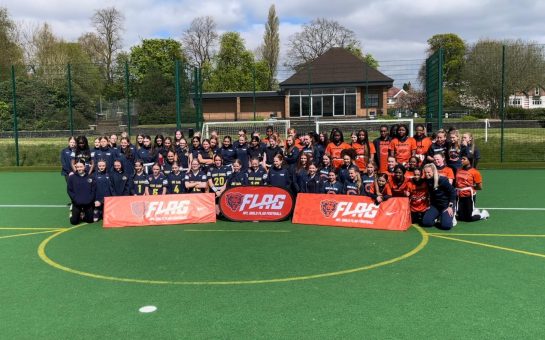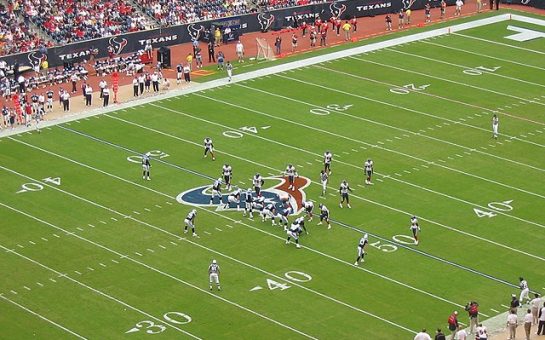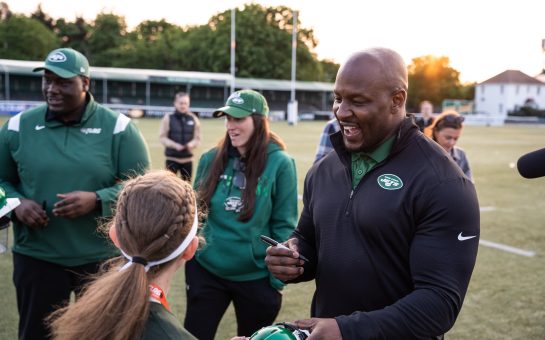Welcome to MM’s idiot’s guide to the basics of the NFL, ahead of Super Bowl LV.
What is the NFL and why should I bother watching it?
The ‘NFL’ is an acronym for National Football League and to best explain its popularity — it is to our friends across the pond what the ‘soccer’ is to us Brits.
Why should you bother? Well, every Sunday during the NFL season, millions of Americans perch on the edge of their sofas, enthralled by the thrills and spills, heroes and heartbreaks that come with every round of matches.
Meh, I’ve tried watching before — I find it so boring!
‘Boring’ is one word that cannot be fairly associated with NFL. This opinion often derives from the rather long list of confusing laws that come with the sport.
However, when I first started watching NFL some years ago, I thought exactly the same. Take the time to watch a game or two. Sky’s commentary is incredibly useful for telling you exactly what you’re watching in lay-man’s terms.
Persist with it and it won’t take long before you’re something of an expert.
Ok, fine. I’ll watch this Super Bowl thing. When and what is that?
Excellent. You’re just in time! The Super Bowl is the NFL’s competition final — which will take place in Tampa on Sunday at 11:30pm on BBC One — contested between the Kansas City Chiefs and the Tampa Bay Buccaneers.
Think the Rugby League Grand Final on steroids… a lot of steroids.
The NFL is divided into two conferences (or leagues, if you will) — AFC and NFC — and the best side from each are put up against one another at the end of a brutal five-month fixture list.
The winners of their respective Championship Game (or semi-finals) meet in the Super Bowl.
Sounds big. Gimme the basics. How many players are on each team?
Okay. Try and get your head around this.
Each NFL team has two different sides depending on whether they’re attacking or defending — ‘offence’ and ‘defence’. If you really want to fit in, put emphasis on the ‘de’ in ‘defence’ when you’re talking about it.
Much like our very own beautiful game, they both field 11 players, with the simple aim of either scoring, or stopping your opponents from doing the same.
Offence and defence from the same side will never meet on the same pitch. Are you still with me? Good.
Now onto substitutes. The squad limit is 53, and coaches (of which there are a lot, but don’t worry about that right now) will bring on different players depending on the tactic to try and outfox the opposition.
Wait a second — what’s a ‘snap’?
Sorry. A ‘snap’ is simply the start of each play. You’ll see two lines of bodies facing each other as though they’re about to lock into a rugby-esque scrum.
The central player in the offensive line will start the play by ‘snapping’ the ball into the quarterback’s hands. It is then the offensive lines job to protect the quarterback from being hit or sacked (caught and brought down in possession) by the defensive line.
Quarterbacks… the college hunk who always gets the girl in American movies? Must be important?
Just a bit. Only one on each offence, quarterbacks are the men that make a team tick and are mostly responsible for their team scoring points. They will either pass, run with or hand the ball off to someone else to run with it.
This is not like rugby. Passes almost always go forward, never backwards.
At the snap, the offensive receivers will run up the pitch, shaking off their defensive counterparts in a bid to catch the ball.
If there’s no other option, sometimes you’ll see a quarterback running up the pitch with the ball — however, more often than not they’ll hand the ball to a running back who sprints with the ball as far as he can.
So, the ‘offence’ has a lot of strings to its bow — what about the defence?
Luckily for the defence, the offence only gets four attempts to move the ball up the field. If they don’t make 10 yards in four attempts, they have to give the ball back to the opposition — this is where you’ll see a whole new team (from the same team) enter the field of play.
These attempts are called ‘downs’. You’ll hear that a lot so it’s important to know what they are. At the start of each game, you’ll see ‘1st & 10’ in the corner next to the scoreboard. This means it’s their first attempt, and they’ve got 10 yards to go before they have another first down.
For example, if they only get three yards, they’ll be left with ‘2nd & 7’. Makes sense, right?
If the ball does get 10 yards or further, from wherever the offensive player is tackled or runs out of play it starts over, 1st & 10.
Unless they’re very close to the oppositions End Zone, most teams will elect to bring out their punter for a fourth down, a specialist player whose job is purely to kick the ball as far down field as possible — pushing the opposition further back.
Does someone always have to catch the quarterbacks throw? Can he not just chuck it into an open space for a first down?
No, he can’t. The ball must not touch the ground. If a receiver, a running back or quarterback gets tackled and the ball hits the ground, that’s okay as long as either their knee or their ball-carrying arm gets down to the deck first.
And if it doesn’t?
Then it’s a ‘fumble’, you’ll hear that a lot too. Fumbles tend to be spectacularly catastrophic, game-changing moments where players from both teams hurl themselves towards the ball to try and recover it first.
If the defence manage to get it, that’s called a ‘turnover’ — meaning a turnover of possession as their offence return to the field from wherever the ball is carried to.
Feasibly, a defensive player can pick the ball up and run all the way for a touchdown. This can also happen when the defence catch the ball ahead of an offence’s receiver, which is an ‘interception’.
Ah, yeah. I know what a touchdown is, but how are they scored?
If the ball is thrown or run into the opposition’s end-zone – a rectangular box at each end of the pitch – it’s a touchdown for six points. It works a bit like a rugby try-line, but you don’t have to ground the ball and it can be caught from anywhere within the end zone.
Teams then decide to either kick for an extra point from within ten yards or go for a two-point conversion, which is a snap from the two-yard line.
The caveat of the latter is that you only get one attempt to throw or run it into the end-zone, so in most situations it is safer and far easier to go for the kick.
Any other ways in which points can be scored?
Kicks, or ‘field goals’, work much like rugby – in between the posts and you earn three points. Teams will elect to do so if they are near enough to make the kick but are on fourth down. Or perhaps it is near the end of the fourth quarter and they’re three points away from winning the whole thing!
Quarters?
Oh, yeah. Pretty straightforward. The game lasts for an hour and is divided into four quarters, but there is a 15-minute break at half-time.
The offence has 40 seconds between each play to snap the ball. Time is an essential part of the game – do you wind the clock down if you’re the offence and you’re trying to hang onto the lead?
Teams also get three timeouts per half. A defence might decide to call a timeout to stop the clock, which prevents the offence from slyly taking their time.
OK, OK. I’m with you. My head hurts.
Your education does not end here. The only way you can truly understand the game and its nuances are by watching, listening and learning.
One more thing – ‘Hail Mary’? Who’s she?
I don’t know who she is. But a ‘Hail Mary’ is a deep, desperate pass on a wing and a prayer.
If a team is losing with only seconds left, the quarterback might decide to sling the ball up-field in the hope of a touchdown. There are a few problems with this.
Firstly, the ball must reach the end-zone, secondly his receivers must reach the end-zone, and thirdly those receivers must catch the ball before it drops to the ground or is batted down by the defence.
YouTube the 2012 Super Bowl between the New York Giants and the New England Patriots for a failed example of this. When it does work, however, it’s one of those jaw-dropping moments which make the game what it is.
What haven’t we covered?
Kick-offs, particular offensive and defensive positions, safeties, co-ordinators, head coaches, flags, penalties, divisions and all sorts of the nitty-gritty.
Go now. Put on a foam finger, buy a few crates of Bud Light, buy a Springsteen t-shirt, make nachos and order in a whole raft of Papa John’s pizzas and head off into the wilderness.
You’re ready to enjoy the Super Bowl.
You can check out all the rest of MM’s Super Bowl preview coverage here.



